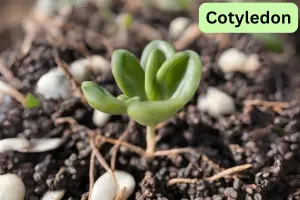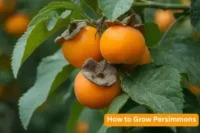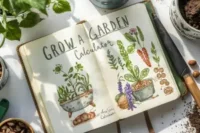Seed Endosperm in Plants: The Key to Healthy Germination and Growth
Published: 23 Sep 2025
Hello, Budding Botanists!
Have you ever thought about how seeds know when to grow into plants? The answer lies in an important part of the seed called the seed endosperm. This unique structure stores nutrients that feed the developing plant embryo, ensuring the seed can grow. The seed endosperm in plants plays a vital role in their early growth and is a key factor in successful germination.
Sheila, with over seven years of experience in botany, explores the fascinating world of seed structures. In this article, we will study the basics of seed endosperm, its types, importance and role of endosperm in gardening, along with a conclusion at the end.
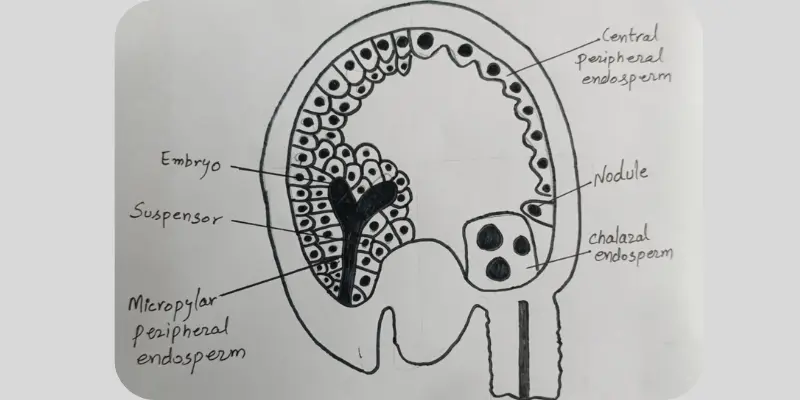
After reading, you’ll gain valuable insights into seed anatomy and practical tips for gardening and seed selection. Ready to unlock the secrets of healthy, thriving plants? Keep reading!
What is Seed Endosperm In Plants 🌱
Seed endosperm is the most important part of seed anatomy. It acts as a nutrient store for a seed, powering the embryo’s early growth. It’s like the food supply for a young plant, ensuring it can sprout and grow.
In my experience, a healthy endosperm is essential for successful germination, making it vital for gardeners and students alike.
Structure of Seed Endosperm 🧬
The seed endosperm is a specialized tissue found within the seed. It is primarily involved in storing nutrients for the developing embryo. Its structure is unique and essential for understanding seed development and germination.
| Feature | Descriptions |
| General Structure | The endosperm is typically triploid, consisting of three sets of chromosomes (two maternal and one paternal). It surrounds the embryo and provides essential nutrients. |
| Cell Type | Primarily composed of parenchyma cells, which are thin-walled and unspecialized, allowing nutrient storage and transport. |
| Cell Arrangement | Cells are organized into layers, with large central cells storing starch and smaller peripheral cells surrounding them. |
| Peripheral Cells | In some plants, the endosperm forms a thicker outer layer, or cap, surrounding the embryo, providing physical protection. |
| Endosperm Caps | In some plants, the endosperm forms a thicker outer layer, or cap, that surrounds the embryo, providing physical protection. |
| Embryo-Proximity Cells | These cells are located near the embryo and are rich in proteins and fats, which provide the embryo with essential nutrients for early growth. |
| Vacuole | The vacuole in the endosperm cells stores water and soluble nutrients like sugars, amino acids, and minerals, supporting the embryo’s metabolism. |
| Nutrient Composition | Endosperm cells store starch (primary energy source), proteins (for growth), oils (in some species), and water (to support hydration and nutrient movement). |
| Developmental Stages | The endosperm starts as multinucleate (nuclear type) or cellular (cellular type) and then differentiates into specialized nutrient-storing cells. |
| Vascular System | Some seeds develop a vascular system in the endosperm, which helps transport nutrients to the developing embryo. |
Composition of Endosperm 🥛
The specific composition of the endosperm can be broken down into several components:
- Starch Grains: One of the most common components of endosperm cells in many plants is starch. The starch grains are stored in large vacuoles within the cells, and their primary function is to provide energy during the early stages of germination.
- Proteins: Besides starch, endosperm cells often contain proteins, especially in seeds of dicots like beans. These proteins serve as a source of nitrogen and amino acids for the growing embryo.
- Oils: The endosperm stores oils in some species, such as in many nut and oilseed plants (like sunflower or canola). These oils provide concentrated energy to support seedling growth during germination.
- Water-Soluble Compounds: Water-soluble compounds (such as sugars and minerals) are stored within the vacuoles in the endosperm. These soluble nutrients help support the seed’s metabolic activities during early growth.
Role of Endosperm In Seeds 🌾
- The endosperm is a specialized tissue found in seeds that serve as a food reserve for the developing embryo.
- It provides essential nutrients, like starches, proteins, and oils, which the embryo uses as it grows.
- Think of the endosperm as the fuel tank that powers the seed’s early stages of growth until the plant can start producing its food through photosynthesis.
- The endosperm nourishes the embryo and helps it break through the seed coat, allowing it to develop into a healthy plant. This makes the endosperm an integral part of the seed’s life cycle, ensuring successful germination and strong plant growth.
- In my experience, seeds with a well-developed endosperm tend to have higher germination success.
Types of Seed Endosperm 🧩
Just like there are different types of seeds, there are also other types of endosperm, each with its unique structure and function. Understanding these types can help gardeners select the right seeds and understand how plants grow.
Let’s explore the three main types of seed endosperm:
- Nuclear Endosperm
- Cellular Endosperm
- Helobial Endosperm
Nuclear Endosperm 🌌
- Nuclear endosperm is formed when the endosperm nuclei divide but don’t form cell walls, creating a liquid-like structure. This type is commonly found in seeds like rice and wheat, where the endosperm serves as a starch-rich food reserve.
- From my experience, the nuclear endosperm is particularly important for staple crops, as it provides the energy needed for quick germination.
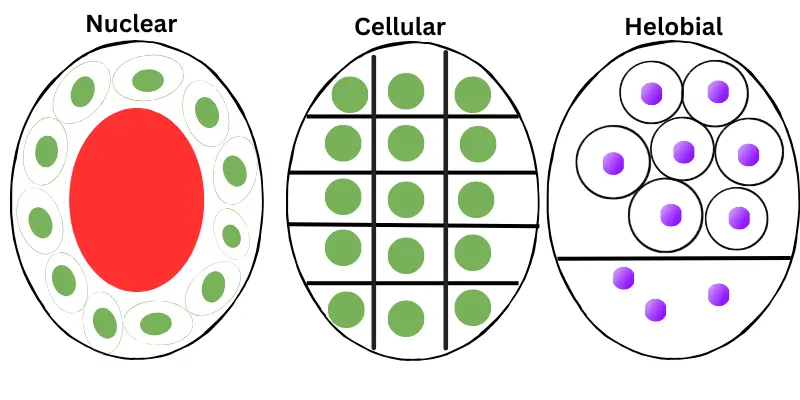
Cellular Endosperm 🧫
- In cellular endosperm, the nuclei divide and form cell walls, creating a solid, structured tissue. This type is found in plants like corn and coconut, where the endosperm becomes a firm, edible part of the seed.
- I’ve noticed that plants with cellular endosperm tend to be strong and better at supporting long-term growth, as the solid tissue offers more sustained nutrition.
Helobial Endosperm ⚗️
- Helobial endosperm is a unique type found primarily in some monocots like lilies. It’s a hybrid structure that combines features of both nuclear and cellular endosperm.
- This type plays a critical role in the initial stages of seedling growth, providing both quick nourishment and longer-lasting support.
- From what I’ve observed in my studies, the helobial endosperm helps seeds adapt to various environmental conditions, making these plants more versatile.
Importance of Endosperm 🌟
The endosperm is critical for seed development, providing essential nutrients that help the plant flourish from germination to growth. Without a healthy endosperm, the seed wouldn’t have the necessary energy to develop into a mature plant.
Let’s take a closer look at why this part of the seed is vital for plants and humans.
Nutritional Role for Plants 🌿
- Endosperm is the main food source for the development of an embryo, providing starches, proteins, and essential oils for growth. Think of it like the fuel tank for a car—without it, the seed wouldn’t have the energy to sprout.
- From my gardening experience, I’ve seen how seeds with a well-developed endosperm grow faster and stronger because they have all the necessary nutrients right at the start.
Human Use of Endosperm 🍚
- Endosperm isn’t just important for plants; it also plays a significant role in human nutrition. For example, the starchy endosperm in wheat is ground into flour, which we use to make bread, pasta, and more. Corn, another common crop with a starch-rich endosperm, is used to make products like corn syrup and animal feed.
- As I’ve worked with different crops, I’ve been amazed at how we depend on the endosperm for many foods daily.
Role in Germination 🌳
- After a seed begins to sprout, the endosperm supports the developing seedling by providing nutrients until it can produce its food through photosynthesis.
- The endosperm ensures that the plant has enough energy to break through the soil and grow strong roots.
- In my research, I’ve observed that seeds with a robust endosperm have a better chance of growing during germination, leading to healthier plants.
| Interesting Facts |
|---|
|
Seed Endosperm in Gardening
Knowing about the endosperm can really help gardeners, especially when picking seeds and growing plants. Think of the endosperm as a packed lunch for the seed—it has all the food needed to start growing. You can make smarter choices for your garden when you understand how it works.
Seed Selection for Planting 🌻
- When choosing seeds, prioritize ones with a healthy, well-developed endosperm. These seeds are more likely to germinate successfully and grow into strong plants.
- In my gardening experience, seeds from trusted sources often have a visible fullness and vitality, reflecting a robust endosperm. This simple observation can save you from disappointment and lead to healthier crops.
Improving Seed Germination 🌤️
- To boost germination, provide the right conditions for seeds to access their endosperm reserves.
- Keep the soil moist but not waterlogged, and ensure the temperature suits the seed type.
- When I first started gardening, I found that soaking seeds overnight softened the seed coat, making it easier for the embryo to access the endosperm, leading to quicker sprouting.
Endosperm and Seed Storage 🏡
- When kept in cool, dry places, seeds with endosperms last longer and store better. The endosperm retains nutrients, ensuring the seed remains viable.
- I’ve successfully stored seeds for years by sealing them in airtight containers and placing them in a refrigerator. This method maintains their vitality and allows me to save them for future planting seasons.
Conclusion 📝
So, guys, it’s time to wrap up. In this article, we’ve covered what is seed endosperm in plants in detail. We’ve looked at its structure, types, and its incredible importance to plants and gardeners alike.
I recommend choosing high-quality seeds with a healthy endosperm if you aim for strong germination rates and healthy plants. It’s a small step that makes a big difference.
If you’re curious, try dissecting a seed to see the endosperm up close—it’s a fun and educational activity! Don’t forget to share your gardening experiences in the comments or with fellow enthusiasts!
Frequently Asked Questions ❓
These FAQs provide clear, beginner-friendly guidance to help readers better understand seed endosperm and its importance.
The seed endosperm stores food for the developing plant embryo. It provides essential nutrients like starch, proteins, and oils that the seedling uses until it can produce its food. Think of it as a packed lunch that helps the plant grow strong during its early stages.
No, not all seeds have endosperm. Some seeds, like beans and peas, use their endosperm during seed development. These seeds rely on their cotyledons (seed leaves) to store and supply nutrients.
No, the endosperm and embryo are different parts of the seed. The embryo is the baby plant that grows into a seedling, while the endosperm provides the nutrients it needs to succeed. Together, they work to ensure the seed’s development.
Healthy seeds with a good endosperm are usually plump and firm. If a seed looks shrivelled or feels hollow, it might lack a well-developed endosperm. Buying seeds from trusted sources ensures better quality.
A fun experiment is to soak seeds like corn or beans in water and carefully dissect them. You’ll see the endosperm as a distinct part inside the seed. This hands-on activity is great for kids and beginner gardeners to learn about seed structure!

- Be Respectful
- Stay Relevant
- Stay Positive
- True Feedback
- Encourage Discussion
- Avoid Spamming
- No Fake News
- Don't Copy-Paste
- No Personal Attacks

- Be Respectful
- Stay Relevant
- Stay Positive
- True Feedback
- Encourage Discussion
- Avoid Spamming
- No Fake News
- Don't Copy-Paste
- No Personal Attacks

